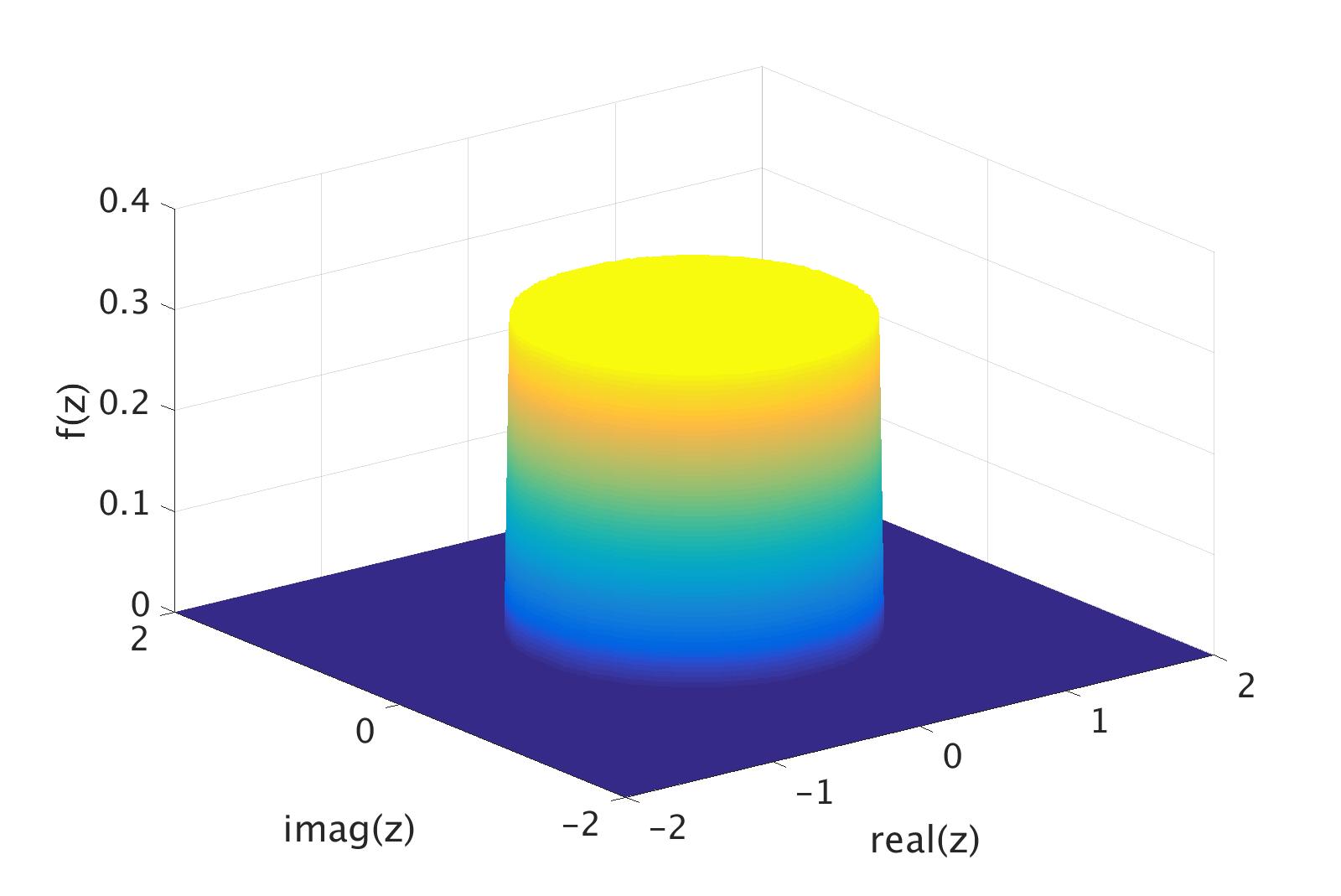In
probability theory
Probability theory is the branch of mathematics concerned with probability. Although there are several different probability interpretations, probability theory treats the concept in a rigorous mathematical manner by expressing it through a set o ...
and
statistics
Statistics (from German language, German: ''wikt:Statistik#German, Statistik'', "description of a State (polity), state, a country") is the discipline that concerns the collection, organization, analysis, interpretation, and presentation of ...
, complex random variables are a generalization of real-valued
random variables
A random variable (also called random quantity, aleatory variable, or stochastic variable) is a mathematical formalization of a quantity or object which depends on random events. It is a mapping or a function from possible outcomes (e.g., the po ...
to
complex number
In mathematics, a complex number is an element of a number system that extends the real numbers with a specific element denoted , called the imaginary unit and satisfying the equation i^= -1; every complex number can be expressed in the form ...
s, i.e. the possible values a complex random variable may take are complex numbers. Complex random variables can always be considered as pairs of real random variables: their real and imaginary parts. Therefore, the
distribution Distribution may refer to:
Mathematics
*Distribution (mathematics), generalized functions used to formulate solutions of partial differential equations
* Probability distribution, the probability of a particular value or value range of a vari ...
of one complex random variable may be interpreted as the
joint distribution
Given two random variables that are defined on the same probability space, the joint probability distribution is the corresponding probability distribution on all possible pairs of outputs. The joint distribution can just as well be considered ...
of two real random variables.
Some concepts of real random variables have a straightforward generalization to complex random variables—e.g., the definition of the
mean
There are several kinds of mean in mathematics, especially in statistics. Each mean serves to summarize a given group of data, often to better understand the overall value (magnitude and sign) of a given data set.
For a data set, the ''arithme ...
of a complex random variable. Other concepts are unique to complex random variables.
Applications of complex random variables are found in
digital signal processing
Digital signal processing (DSP) is the use of digital processing, such as by computers or more specialized digital signal processors, to perform a wide variety of signal processing operations. The digital signals processed in this manner are ...
,
quadrature amplitude modulation
Quadrature amplitude modulation (QAM) is the name of a family of digital modulation methods and a related family of analog modulation methods widely used in modern telecommunications to transmit information. It conveys two analog message signal ...
and
information theory
Information theory is the scientific study of the quantification (science), quantification, computer data storage, storage, and telecommunication, communication of information. The field was originally established by the works of Harry Nyquist a ...
.
Definition
A complex random variable
on the
probability space
In probability theory, a probability space or a probability triple (\Omega, \mathcal, P) is a mathematical construct that provides a formal model of a random process or "experiment". For example, one can define a probability space which models t ...
is a
function
Function or functionality may refer to:
Computing
* Function key, a type of key on computer keyboards
* Function model, a structured representation of processes in a system
* Function object or functor or functionoid, a concept of object-oriente ...
such that both its real part
and its imaginary part
are real
random variables
A random variable (also called random quantity, aleatory variable, or stochastic variable) is a mathematical formalization of a quantity or object which depends on random events. It is a mapping or a function from possible outcomes (e.g., the po ...
on
.
Examples
Simple example
Consider a random variable that may take only the three complex values
with probabilities as specified in the table. This is a simple example of a complex random variable.
The
expectation
Expectation or Expectations may refer to:
Science
* Expectation (epistemic)
* Expected value, in mathematical probability theory
* Expectation value (quantum mechanics)
* Expectation–maximization algorithm, in statistics
Music
* ''Expectation' ...
of this random variable may be simply calculated:
Uniform distribution
Another example of a complex random variable is the uniform distribution over the filled unit circle, i.e. the set
. This random variable is an example of a complex random variable for which the
probability density function
In probability theory, a probability density function (PDF), or density of a continuous random variable, is a function whose value at any given sample (or point) in the sample space (the set of possible values taken by the random variable) can ...
is defined. The density function is shown as the yellow disk and dark blue base in the following figure.

Complex normal distribution
Complex Gaussian random variables are often encountered in applications. They are a straightforward generalization of real Gaussian random variables. The following plot shows an example of the distribution of such a variable.

Cumulative distribution function
The generalization of the cumulative distribution function from real to complex random variables is not obvious because expressions of the form
make no sense. However expressions of the form
make sense. Therefore, we define the cumulative distribution



